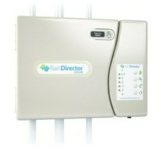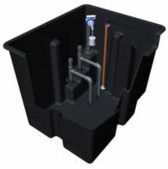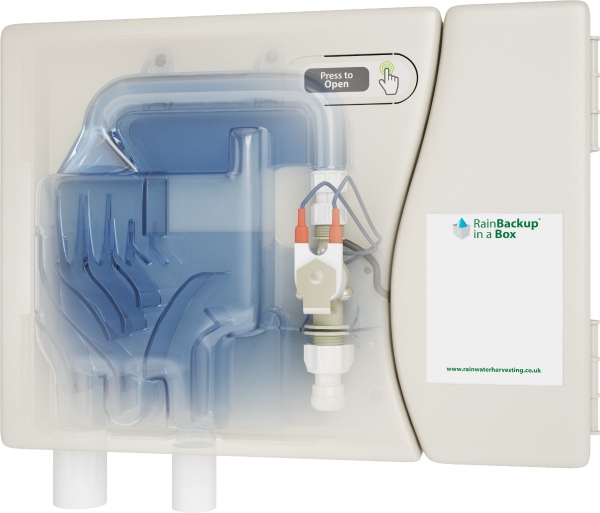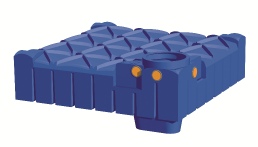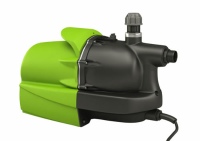Rainwater harvesting is the collection and storage of rainwater that would otherwise flow down gutters into the drain. Rainwater is collected from the roof, then re-used within the home and garden. This can provide substantial savings on water bills, as well as making your home more sustainable.
Rainwater can be used for all outdoor uses: watering the garden, washing cars, cleaning patios, drives and windows, topping up swimming pools, ornamental ponds and hot tubs. With some plumbing alterations, it can also be used inside the house to flush toilets and feed washing machines. Besides saving on drinking water use, rainwater use encourages less build-up of calcium deposits in appliances. The diversion of rainwater to the storage tank can in many situations attenuate flooding.
The principle uses for rainwater are:
- Toilets (around 35% water use)
- Washing Machines (around 15% water use)
- Garden/Outside Use (around 5%, yet this figure can grow greatly for keen gardeners)
According to the Environment Agency, each person in the UK uses in the region of 150 litres of drinking quality water every day. Around half of this amount need not be drinking water. This means water has gone through an energy and carbon intensive process of filtration, chemical treatment, and pumping from miles away, just to flush down a toilet or water the lawn. This is clearly a waste of our resources. By installing a rainwater harvesting system you will do more than help protect the environment:
- Reduce water bills by around 50%.
- Increase chances of your planning gaining permission. (Planners often favour environmentally friendly applications.)
- Provide your garden with water during a hose pipe ban.
- Reduce flood risk. Rainwater harvesting acts as part of a SUDS (Sustainable Urban Drainage System).
- Provide your home with soft, lime scale free water for washing machines and toilets; helping to prevent breakdowns and reducing the amount of detergent needed.
Yes! Your garden prefers rainwater to mains water because it does not contain the chemicals needed to make mains water drinking quality.
In recent times many areas have had hosepipe bans, banning the use of hosepipes for watering gardens and cleaning cars. New legislation will give water boards the right to prohibit using hosepipes for other outdoor cleaning purposes such as washing boats, patios, drives, windows, and also for filling swimming pools, ornamental ponds and hot tubs.
With a rainwater harvesting system installed, you will be able to continue using your hosepipe as long as the water is rainwater.
Yes! Typically you will save around 50% on your current metered bill. If you are keen a gardener or have large water requirements, the savings can be even higher. Depending where you are in the country, some annual water bills are now averaging over £600 per year. Some of our customers in the South East of England have reported water bills of over £850 per year.
Absolutely. Domestic rainwater harvesting systems filter the collected rainwater very heavily, and water is stored below ground where it stays at a constant, cool, temperature and away from light. This means it is practically impossible for any bacterial action to occur. Collected Rainwater stays perfectly clean, clear, and odourless in any properly installed and maintained system.
Yes, all water boards have to install a meter at the request of the householder. Installation is free, and some boards provide the meter as well. Some water boards insist on installing a meter with change of ownership, and sometimes, in tenancy of a property.
Rainwater harvesting acts as part of a Sustainable Urban Drainage System (SUDS.) In heavy rainfall the tank fills first, then should the rainfall continue, the tank will overflow into a soak-away. This takes stress off public storm drains.
Water can be boiled and treated with UV filtration to make it drinking quality, yet this typically is only economically viable where occupants are off grid and have no mains water source. Within a normal system, rainwater is classed as non-potable or non-drinking water by UK water regulations. This means it cannot be used for applications where there is human contact (such as drinking, bathing and cooking).




